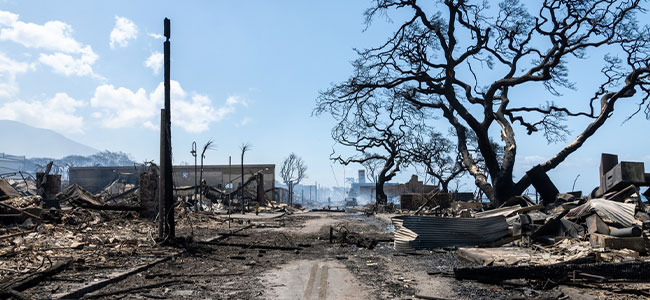
EPA Reaches 75 Percent Completion in Phase 1 of Maui Cleanup Efforts
This first phase centers on the removal of hazardous materials.
- By Robert Yaniz, Jr.
- Oct 19, 2023
The U.S. Environmental Protection Agency (EPA) has reported significant progress in its mission to remove hazardous materials from properties affected by the Maui Wildfires in Lāhainā, Maui.
According to a release dated Oct. 18, EPA crews have completed over 75 percent of the hazardous material removal, marking the successful execution of Phase 1 in the federal cleanup response. This first phase, overseen by the EPA, focuses on the identification, assessment and removal of hazardous materials from the burnt properties.
In their ongoing efforts, EPA teams have expanded their scope of work to encompass ash stabilization initiatives within Lāhainā, in addition to the meticulous deconstruction and disposal of electric and hybrid vehicle batteries. Cultural monitors are continually aiding EPA personnel throughout these hazardous material removal and soil stabilization operations.
On Oct. 13, the EPA began the application of soil stabilizer on the ash and debris footprints of burned structures and vehicles, especially those containing damaged lead-acid batteries. This application is critical in curbing the mobility of toxic ash, which, if left unchecked, could pose health and environmental hazards by spreading to neighboring properties and water sources.
The EPA is working with the County of Maui, to identify, recover, transport and safely dispose of lithium-ion batteries from electric and hybrid vehicles. Owners must refrain from attempting to start, work on or remain inside these vehicles within the disaster area. Fire-damaged electric and hybrid vehicle batteries pose a safety risk to response personnel and the community.
Once Phase 1 is completed, the EPA will launch Phase 2, which involves the removal of all debris from the affected properties, a task that will be supervised by the U.S. Army Corps of Engineers.
About the Author
Robert Yaniz, Jr. is the Content Editor for Environmental Protection.